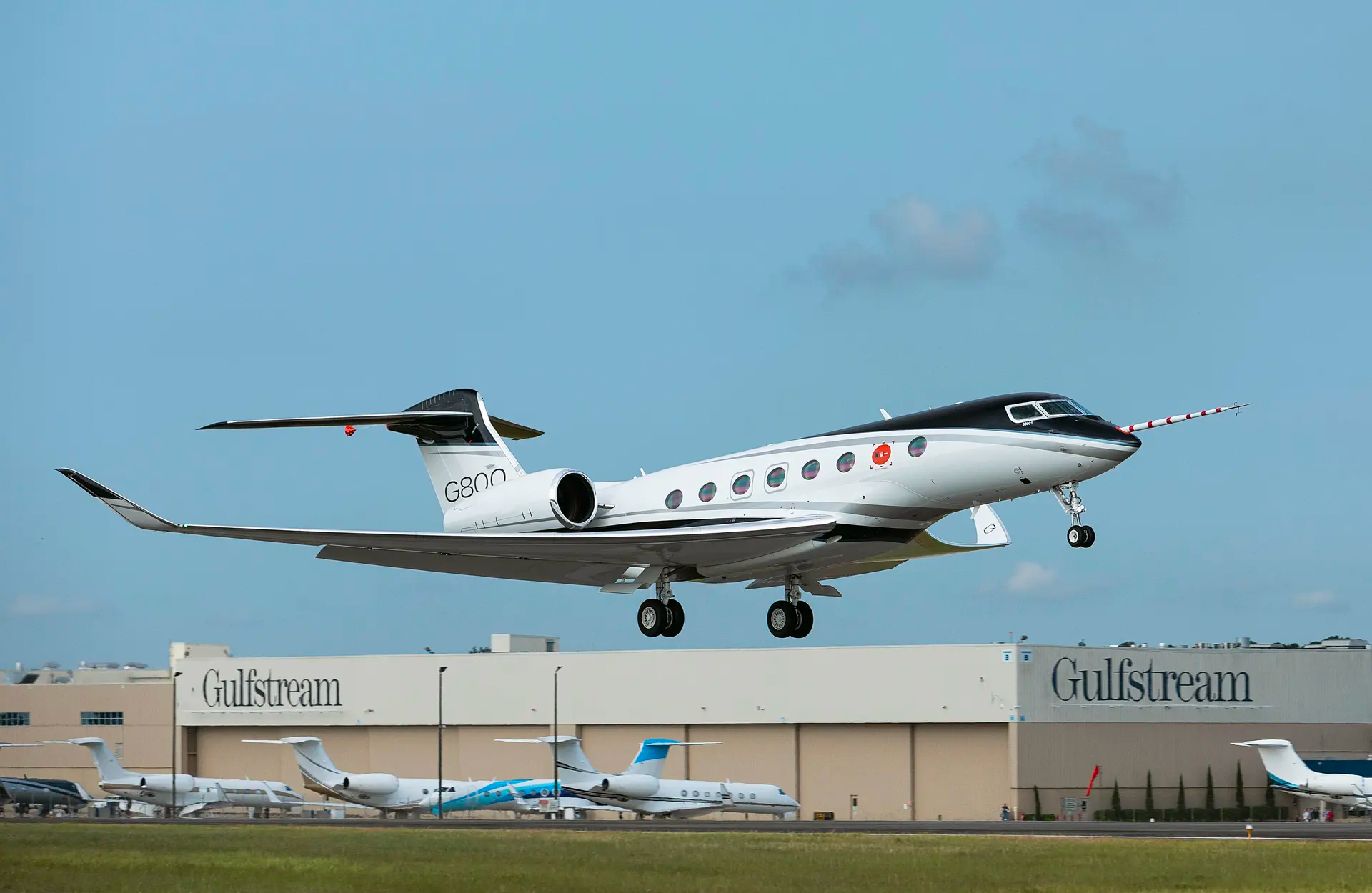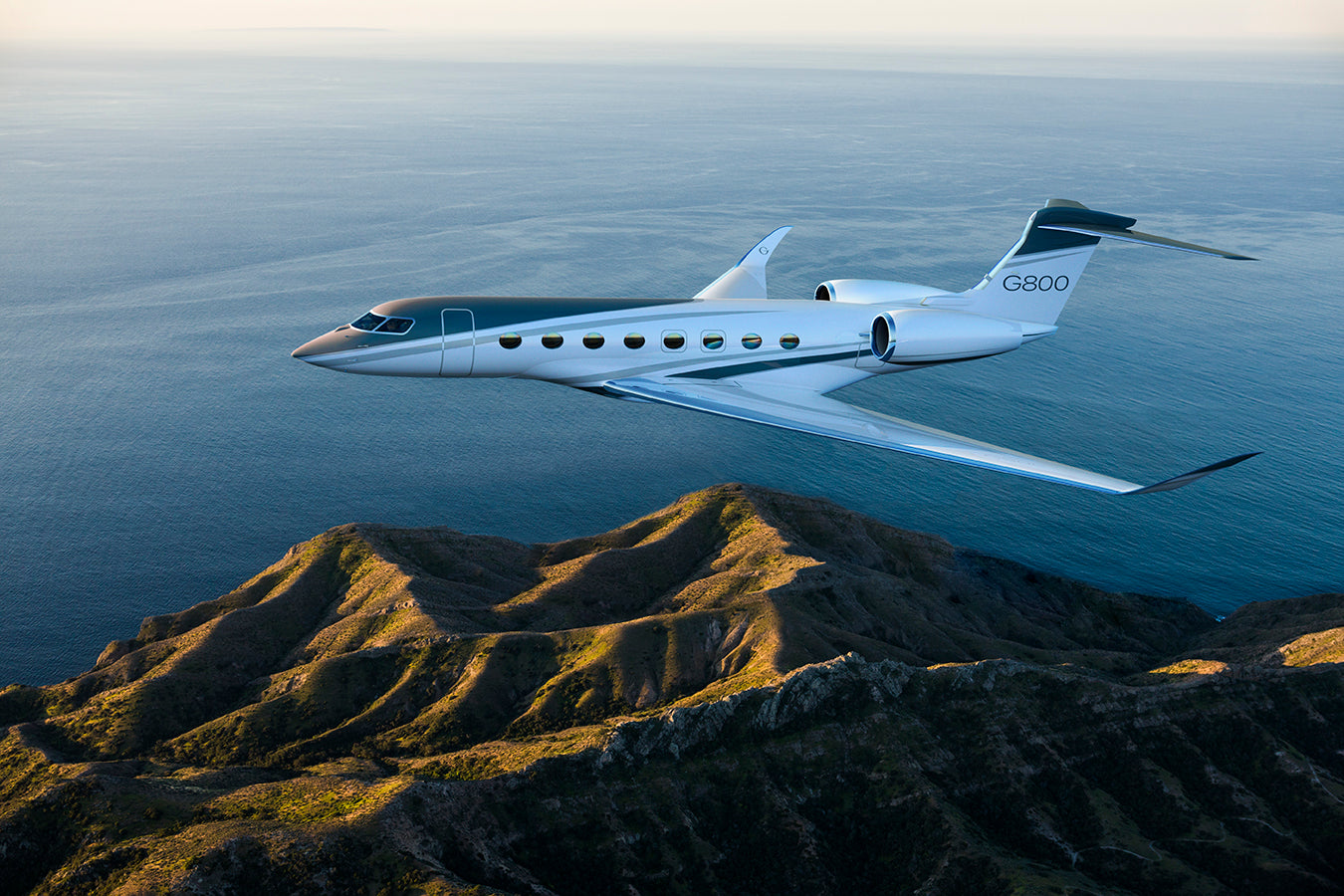Dassault Aviation (Booth Z67, Static AD 20) is taking advantage of the resumption of the in-person EBACE this week to show off the latest Falcon business jets. At Europe's major business aviation expo, the French airframer is displaying a fully completed Falcon 6X, marking the twinjet's public debut, as well as a full-size cabin mockup of its 7,500-nm Falcon 10X.
The 10X mockup on exhibit in Geneva this week has a cabin configuration that differs from the one presented at NBAA-BACE in October—which is still on display in the United States—and stresses the interior's extremely modular design and adjustable combinations. Last May, Dassault presented the 10X, the company's largest and longest-range aircraft to date.
In addition to its potential to circumnavigate the globe, the interior is larger, wider, and higher than any standard business jet now available. The introduction into service (EIS) date for the 10X is set for late 2025.
Meanwhile, the Falcon 6X, which was announced in 2018 and will be unveiled in a virtual ceremony in December 2020, is set to begin service in the middle of next year.
On Sunday, a certification delay was disclosed due to supply chain difficulties caused by Covid 19. The 6X is based on the 5X cross-section, however the Safran Snecma Silvercrest turbofan's continuous delays and development concerns, which ultimately led to the 5X program's termination, caused Dassault to return to Pratt & Whitney Canada (P&WC) as the engine provider. P&WC engines also power the Falcon 7X and 8X trijets.
PW812D turbofan engine by Pratt & Whitney
The PW812D engine for the 6X ("D" for Dassault) was certified by Transport Canada in December, with EASA and FAA certifications forthcoming. The PW812D uses a 44-inch single-piece fan, 4.5:1 to 5:1 bypass ratio, and low-emissions Talon X combustor to deliver 13,500 pounds of thrust.
The 6X's maximum range is 5,500 nm with eight passengers and three crew with a long-range cruise speed of Mach 0.80. (10,200 km). At Mach 0.85, the wavelength is reduced to 5,100 nm. The ceiling is 51,000 feet and the maximum Mach operational speed (MMO) is 0.90.
Dassault test pilots flew the Falcon 6X over its top operating speed of Mach 0.90 in March. The airspeed indicator was set at Mach 0.97 in a second test, and the "plane operated flawlessly, showing its structural robustness and exceptional mobility," according to Dassault. During engine testing, a 50 percent sustainable aviation fuel (SAF) blend was used.
Last year, the airframer allocated three development aircraft to flight testing. The first test 6X, S/N 1, flew for the first time in March 2021, followed by the second example in April and S/N 3 in June. Each test aircraft, as well as S/N 4—the first production 6X—flies several hours per flight on a daily basis.
According to Dassault, all test points beyond Mmo and Vmo have been accomplished, and every area of flight testing, from system development to aircraft performance and envelope expansion, is going according to plan and exceeding expectations.
In March, a team of pilots, engineers, and technicians from Dassault Aviation and Pratt & Whitney Canada completed cold-weather testing, bringing the long-range fly-by-wire twinjet one step closer to certification. The cold soak experiments were carried out on Falcon 6X S/N 3 in Iqaluit, in northern Canada.
The aircraft was flown to Iqaluit for the trials from the manufacturer's test site in Istres, France, near Marseille. During testing of the aircraft's PW812D engines, systems, and low-temperature maintainability, temperatures dropped to -37 degrees C (-35 degrees F), according to Dassault Aviation executive v-p of civil aviation Carlos Brana.
"At the greatest temperatures an aircraft can be subjected to in the harshest environment circumstances," he noted, "the aircraft worked brilliantly." The ground testing included engine runs as well as high-speed taxi tests. The 6X flew in a holding pattern at 10,000 feet msl after tests of anti-icing and handling qualities, as well as fuel stability and hydraulic fluid temperatures.
The 6X is shaping up to be "a new milestone in flying performance and comfort," according to Dassault chief test pilot Philippe Duchateau. "Even by our demanding Dassault standards," the company's latest long-range extra-widebody twin's flying capabilities "are simply outstanding." "We're really pleased with how the aircraft has performed during the test campaign," he said.
Duchateau praised the twinjet's pitch and roll precision and dependability. He went on to say that the flaperons give him "complete satisfaction." They allow very fine trajectory management and create an even more pronounced sensation of fluidity than on our prior aircraft when combined with the digital flight control system."
Interior of a Dassault Falcon 6X business jet
Cabin Completion S/N 4, which is on show in Geneva this week, has been fully outfitted in the airframer's facilities at Bordeaux-Mérignac Airport in France. The plane took to the sky at the end of the first quarter, and it's being used to validate cabin design and verify the 6X's operational maturity.
In June, this Falcon 6X will fly around the world to showcase a variety of missions in a short amount of time, including operations at high and low altitudes (below sea level), extreme hot and cold weather operations, and short runway landings and departures.
The inside of S/N 3 is complete, with in-flight entertainment and communications systems. The aircraft is also used to evaluate environmental characteristics and temperature management, as well as validate cabin acoustics systems, which, according to Dassault, "are intended to be the industry reference alongside those on the Falcon 8X trijet."
Meanwhile, in the French airframer's 1.25-million-square-foot completion plant in Little Rock, Arkansas, the first customer Falcon 6X, S/N 5 and registered as F-WZOC, is getting a full production interior.On January 28, the green twinjet flew from Bordeaux-Mérignac to Little Rock for an 11-hour, 16-minute journey.
It will remain in Little Rock until the model is certified and then handed over to its owner—Dassault has not revealed who the 6X launch client is. Dassault completed a $60 million, 250,000-square-foot hangar in Little Rock in 2015 for the Falcon 8X and 5X.
Dassault claims that construction of further units is "in full swing" and that more than a dozen planes are nearing completion.
The OEM's product support team is striving to supply Falcon 6X spare parts at its 15 parts distribution facilities across the world as the service entry date approaches, ensuring maximum parts availability and support from the start.
According to Jean Kayanakis, Dassault's senior v-p of worldwide Falcon customer service and service center network, a number of long-lead time items, such as large airframe structures and landing gear, have been ordered, and "we plan on having all needed spares on hand three months before entry into service."
The company's own MRO network, which includes TAG Maintenance Services, Dassault Falcon Service, and ExecuJet MRO Services, is also continuing to train technicians for the 6X. "Everything we've learned about dependability and maintainability has gone into the 6X." But if problems with entry-into-service arise, you can bet we'll do whatever it takes to keep operators flying," he said. One important advantage, according to Kaynakis, is that Dassault's customer care team was involved in the aircraft's design from the beginning.
The 6.5-foot (1.98-meter) height and 8.5-foot (2.58-meter) wide 6X cabin was touted as having the widest cross-section of any purpose-built business aircraft when it was introduced in 2018. Dassault's Falcon 10X, which is planned to feature the largest cabin of any purpose-built business jet, has already exceeded it.
In reality, the 6X and 10X, with their colossal circumferences, represent a significant divergence from the Falcon line's customary moderate ramp scale, indicating a shift in client desire. Dassault also makes it clear with the new models that it will not leave the market to competitors Gulfstream and Bombardier.
The 10X's cabin will be nine feet one inch wide and six feet eight inches tall, thanks to a pair of Rolls-Royce Pearl 10X turbofans that are meant to eventually run on 100 percent SAF. The Gulfstream G700 cabin is eight feet two inches wide and six feet three inches height, but the Bombardier Global 7500 cabin is eight feet two inches wide and six feet two inches tall.
The cabin volume of all three jets is roughly identical, at around 2,700 cubic feet. The Global 7500 has a range of 7,700 nm, which is 200 nm longer than the 10X and G700, but all three cost roughly $75 million (2021 dollars).
Dassault stated the 10X's dramatically swept wings will be built of carbon-fiber materials, leveraging its experience manufacturing composite wings for the Rafale fighter. It will be the company's first commercial airplane with composite wings. Dassault is producing the initial structural wings, equipment, and subassemblies for the 10X at its sites in France and Switzerland, including its new factory 4.0 smart facility in Seclin, northern France.
The revolutionary all-composite wing will be developed and tested on a 10X test bench at Saint-Cloud and Istres, France, and manufactured in a rebuilt facility at Dassault's Biarritz plant. Dassault says the first 10X will take to the skies in early 2024.



